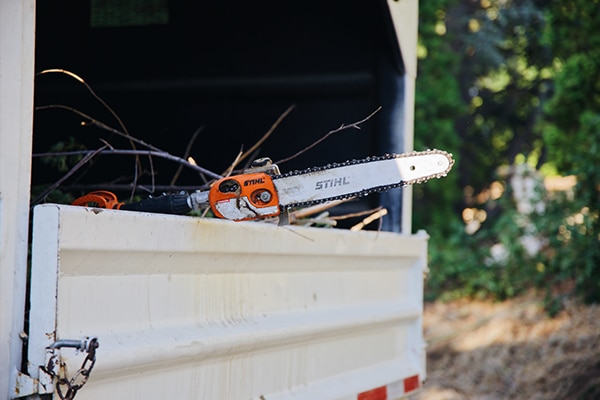
Some of your favorite trees could be ones that grow the fastest. We get to observe the quick growth of these trees as we watch them mature and blossom in short periods of time.
Fast growing shade trees give us the benefit of shade on hot summer days and add beauty to our landscapes. Proper and diligent care can enhance the growth of these species of trees. A solid root system is vital for helping trees to grow faster and good annual pruning practices will optimize their growth potential.
Plan ahead for all four seasons when you plant your trees. For example, do you want a tree to bloom in spring, or offer fall foliage to an otherwise plain looking garden? Maybe it perks up your landscape during the harsh winter months.
Fastest Growing Trees
Hybrid Poplar
This is a very fast-growing tree, sprouting 5 feet to 8 feet per year. This versatile tree can be used as a deciduous screen, shade tree to lower energy costs, and is typically planted in rows for firewood. The Hybrid Poplar is a cottonless hybrid.
Dawn Redwood
This is an ancient tree that was around in the dinosaur age, but is well-suited to modern landscape plantings. The bright green, feathery leaves turn orange-brown or reddish-brown in the fall. When planted thoroughly with a strong root system, the Dawn Redwood tree will grow rapidly. There is a Dawn Redwood in Virginia that reached an apex of 120 feet in 30 years, for an average growth rate of 4 feet per year.
Arborvitae Green Giant
The Arborvitae Green Giant is a vigorous, fast-growing evergreen. This hybrid, which grows as high as 3 feet a year, is a perfect landscape tree for use as a screen, hedge, windbreak, or single specimen. Its natural pyramidal to conical form features dense, rich green foliage that darkens or bronzes slightly in the winter.
Weeping Willow
Graceful and refined, Weeping Willow trees are easily recognized by their open crowns of ground-sweeping branches. Weeping Willows can grow up to 5 feet to 8 feet, making this tree one of the fastest of the fast growing trees.
Japanese Angelica Tree
The angelica (Aralia elata) is a small deciduous tree. In the late summer, this tree displays a visual wonder with its cream-colored blossoms. Leaves turn yellow to reddish purple every autumn. Wildlife are drawn to the pink fruit it bears from early to late fall.
Quaking Aspen
This fast growing tree is associated with the same family as Hybrid Poplar. On average, it grows 2 feet to 3 feet per year and showcases profound beauty to any landscape with its stunning fall colors.
October Glory Red Maple
This speedy growing red maple cultivar is bred for vivid fall foliage. These gorgeous trees feature glistening dark green leaves in spring, that in the summer turn radiant red, which lasts into late fall.
River Birch
Known for its trademark, unique bark, fall colors, and bird habitat, the River Birch is one of the fastest growing birches. Betula nigra can grow as much as 1 ½ feet to 2 feet per year in ideal conditions. River Birch trees naturally grow along riverbanks.
Paper Birch
This exceedingly popular fast growing tree is capable of growing 1 ½ feet to 2 feet per year. Paper birch is named for the tree’s thin white bark, which often peels in paper like layers from the trunk.
Pin Oak
This large shade tree quickly reaches is 70-foot height, and a spread of 25 feet to 40 feet. These trees have glossy dark green leaves that turn russet, bronze or red. Their average growth rate is 2 ½ feet per year.
Leyland Cypress
This fast growing coniferous evergreen tree can grow 3 feet a year and has a pronounced column shape that makes it a very popular tree for home landscape design.
Kanzan Cherry Trees
Kanzan Cherry Trees (Prunus serrulata “Kanzan”) grow very fast, and with its stunning beauty, are ideal for small spaces such as patios. Known for their attractive, flashy double pink flowers, Kanzan Cherry Trees display a unique beauty that extends to autumn when the green deciduous foliage turns yellow and orange-bronze. This tree offers gorgeous symmetry with is upright-spreading form, reaching 15 feet to 25 feet tall and 15 feet to 25 feet wide.
Sunburst Honey Locust Tree
Honey locust (genus Gleditsia) is associated with the pea family (Fabaceae). This tree is native to tropical Africa, North and South America, and central and eastern Asia. Its genus is of 12 species of thorny trees and shrubs, some of which are cultivated as ornamentals or used for timber.
Acacia Tree
There are approximately 160 species of Acacia trees and shrubs (Genus Acacia) in the pea family (Fabaceae). They typically offer an exquisite form and flower display. They are native to tropical and subtropical regions of the world. These trees are commonly found in the savannas of Africa and around Australia. Small, finely divided leaves produce an almost fernlike appearance on many varieties.
Royal Poinciana Tree
Royal poinciana (Delonix regia) is known by common names “flamboyant tree” or “peacock tree.” Its botanical name originates from the Greek delos (conspicuous) and onyx (claw), suggestive of petals that are unusually spoon-shaped and one larger petal making each bloom similarly shaped to an orchid. A mature tree can resemble an umbrella, with a wider canopy than it is tall. These flowers display during summer and can stay on the tree for longer than a month.
Let Boyd’s Tree Service Help Keep Your Trees Healthy and Thriving
At Boyd’s Tree Service, we are a full-service tree and stump removal business that serves the Tri-Cities and surrounding areas. We pride ourselves on always making sure the trees in our communities are healthy and beautiful.
You’ll find that Boyd’s Tree Service – comprised of fourth-generation tree men – we provide the most comprehensive tree care. We take pride in enhancing the well-being, beauty and aesthetics of your trees.
If you live in the Tri-Cities and surrounding areas and you would like more information about our tree services or to schedule an appointment, we invite you to call Boyd’s Tree Service at (509) 585-4194.







